How are lab grown diamond earrings graded?
Key takeaway:
- Grading and certification are important for lab-grown diamond earrings: Just like natural diamonds, lab-grown diamond earrings go through a grading process to assess their quality. Grading helps determine the value and characteristics of the earrings, ensuring buyers make informed decisions.
- The 4Cs play a crucial role in grading lab-grown diamond earrings: The 4Cs, including cut, color, clarity, and carat weight, are assessed to determine the overall quality of lab-grown diamond earrings. Attention to these factors ensures that customers receive earrings that meet their desired specifications.
- Consider additional criteria when grading lab-grown diamond earrings: In addition to the 4Cs, factors like chemical composition, growth rate, origin, and growth method are considered in assessing the quality of lab-grown diamond earrings. Understanding these criteria helps buyers understand the uniqueness of lab-grown diamonds and make informed purchasing decisions.
- Importance of reputable gemological laboratories and diamond certificates: Reputable gemological laboratories like GIA and IGI provide reliable certifications for lab-grown diamond earrings. Buyers should always seek diamond certificates from these trusted sources to ensure the authenticity and quality of their purchases.
- Buyers should prioritize purchasing from trusted retailers: To guarantee authenticity and quality, buyers should only purchase lab-grown diamond earrings from trusted retailers. Requesting diamond certificates and seeking recommendations and reviews of retailers can help ensure a positive buying experience.
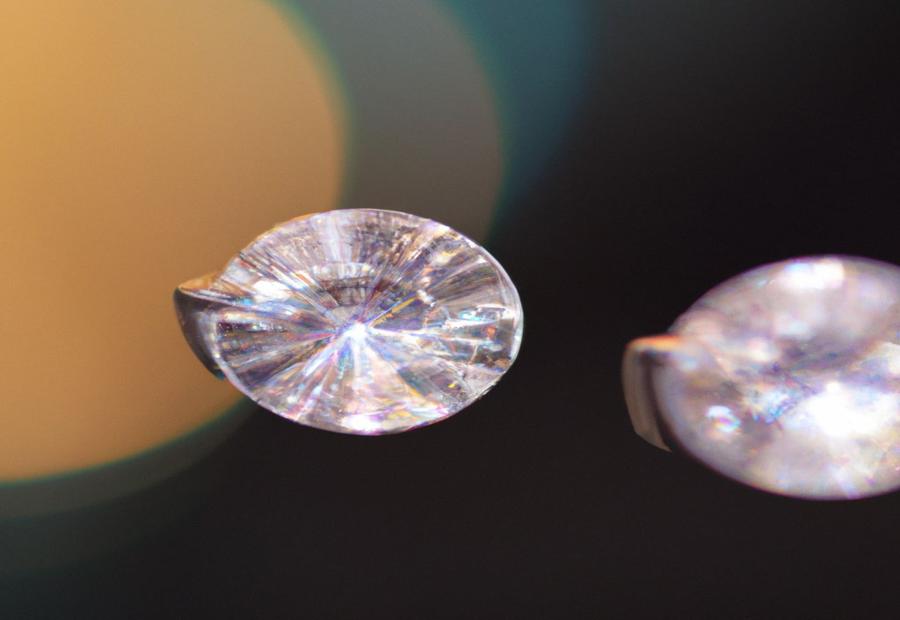
Photo Credits: Www.Lab-Grown-Diamond-Earrings.Com by Russell Martin
Lab-grown diamonds are revolutionizing the jewelry industry, and understanding their grading is crucial for making informed choices. In this section, we will dive into the world of lab-grown diamond earrings and explore their growing popularity. We will also highlight the significance of grading and certification when it comes to these stunning and sustainable alternatives to natural diamonds. Get ready to discover the fascinating journey of lab-grown diamonds and how they are evaluated to ensure their quality and value.
Explanation of lab-grown diamonds and their growing popularity in the jewelry industry
Lab-grown diamonds, or synthetic diamonds, are created in labs with advanced technology. They have become popular for their ethical and sustainable nature. These diamonds are produced by copying the natural process of diamond formation, resulting in top-notch gems with the same physical and chemical properties as mined diamonds.
The increase in popularity of lab-grown diamonds is due to several reasons. Firstly, they are an eco-friendly option compared to traditionally mined diamonds. No large-scale mining operations damaging natural habitats are required. By choosing lab-grown diamonds, consumers help protect the environment.
Also, lab-created diamonds address worries about human rights and unfair labor practices in the mining industry. With lab-grown diamonds, buyers don’t need to worry about exploitation or conflict diamonds. They are a responsible choice for socially aware shoppers.
Furthermore, lab-created diamonds provide an affordable option without sacrificing quality. They are usually less expensive than mined diamonds, providing an accessible option for more customers. Thanks to technology, these diamonds look and last like natural diamonds. Consumers can get beautiful, quality diamonds without breaking the bank.
To sum up, lab-grown diamonds have become popular in the jewelry industry, due to their ethical and sustainable nature, affordability, and high-quality resembling natural diamonds. As consumers become more aware of the environmental and social impact of their purchases, lab-grown diamond earrings, for example, are a great choice for those looking for beautiful and responsible jewelry.
Importance of grading and certification for lab-grown diamond earrings
Lab-grown diamond earrings are popular in the jewelry industry. Grading and certification are essential to make sure they meet quality standards and to determine their value. Certification confirms authenticity and quality, so it’s crucial for buyers and sellers.
Grading assesses the four Cs: cut, color, clarity, and carat weight. The cut of a diamond enhances its sparkle, while color is evaluated using the GIA Color Grading Scale, from colorless to fancy colors. Clarity looks at internal and external flaws, and carat weight affects size and value.
Other criteria such as chemical composition and growth rate are also taken into account when grading lab-grown diamond earrings. Plus, differentiating between growth methods such as CVD or HPHT helps distinguish variations.
For consumers, certification is very important. Reputable labs like GIA and IGI provide reliable certificates. These verify authenticity and that the diamond earrings meet standards.
To get the best value, it’s best to buy from trusted retailers. Request diamond certificates from reputable labs, and research the retailer’s reputation. Following these steps gives buyers the confidence to make a smart purchase.
Grading lab-grown diamond earrings is like examining a fascinating science experiment!
The Grading Process for Lab-Grown Diamond Earrings
When it comes to grading lab-grown diamond earrings, understanding the process is essential. In this section, we will explore the grading process, focusing on the significance of the 4Cs and how each aspect is assessed for lab-grown diamond earrings. Let’s uncover the intricacies behind the quality assessment of these stunning pieces, ensuring you make an informed choice in your diamond selection.
Overview of the 4Cs and their significance in grading
Lab-grown diamonds are getting popular in the jewelry industry, leading to a growing demand for grading and certification. The 4Cs – cut, color, clarity, and carat weight – must be assessed to determine their quality and value.
Cut is important for its ability to reflect light and look dazzling. Color saturation is evaluated on the GIA Color Grading Scale to find out the rarity and value. Clarity means noting internal and external flaws, or inclusions and blemishes. Carat weight influences the value and is a factor for buyers seeking different sizes.
Chemical composition and growth rate, plus growth methods like CVD and HPHT, also affect the grading process. Certification from reputed gemological labs like GIA and IGI provides transparency and authenticity.
It’s best to purchase from trusted retailers with diamond certificates. Read reviews and get recommendations too. Remember, the 4Cs make lab-grown diamond earrings as precious as your dark sense of humor.
Detailed explanation of how each C is assessed for lab-grown diamond earrings
Assessments of lab-grown diamond earrings involve thoroughly evaluating each C. Cut, color, clarity, and carat weight are all key factors in grading them. Detailed analysis of these factors guarantee brilliance, color saturation, lack of flaws, and size.
To assess each C, certain criteria are taken into consideration. This table presents an outline of how each C is judged:
| C | Assessment Criteria |
|---|---|
| Cut | Proportions + cut to enhance its brilliance |
| Color | Color saturation graded on GIA Color Grading Scale |
| Clarity | Internal/ external flaws affecting appearance |
| Carat Weight | Its weight influences its value |
These criteria are fundamental, yet other elements are also factored in. Chemical composition and growth rate guarantee quality. Distinguishing between lab-grown/ mined diamonds, as well as variations based on origin and growth method (e.g. CVD or HPHT), all contribute to assessment.
Certification from reliable labs is essential for lab-grown diamond earrings. Diamond certificates from GIA/ IGI show authenticity and verify quality. Buy from trusted retailers and request for diamond certificates from reputable labs. Seeking recommendations/ reading reviews about retailers will help too.
Lab-grown diamonds are more ethical and have lower environmental impact than mined ones.
Cut: Importance of a well-proportioned and well-cut diamond in enhancing its brilliance
A well-cut and well-proportioned diamond is key to boosting its brilliance. How the diamond is cut – meaning the arrangement of its facets – has a major influence on how light is reflected and refracted. When it is correctly cut, light can enter the diamond and bounce off its inner surfaces, creating an impressive brightness and fire.
During the grading process of lab-grown diamond earrings, expert jewelers rate the cut of each stone based on symmetry, proportions, and artistry. Lab-grown diamonds go through the same 4Cs grading process as mined diamonds, with cut being one of the most significant elements evaluated. The cut of the diamond affects its brilliance, as well-cut stones reflect more light from the table (top surface) and crown (upper portion) than is lost from the sides or bottom.
It is essential for lab-grown diamond earrings to have a well-proportioned and well-polished cut to maximize the diamond’s light performance and show its inherent beauty. The precision and craftsmanship that goes into cutting the diamond is necessary to achieve the best optical properties. The cutter evaluates the shape, size, and crystal structure of the stone before making strategic cuts to increase luminosity.
Symmetry is checked to ensure each facet aligns perfectly with others. This creates a harmonious light reflection. Additionally, proportions are checked to guarantee light entering the diamond is spread throughout its structures, to achieve maximum brilliance.
Seeking a lab-grown diamond earring that will turn heads? Now we will look at color evaluation and grading according to the GIA Color Grading Scale.
Color: Evaluation of color saturation and grading based on the GIA Color Grading Scale
Lab-grown diamonds are becoming popular in the jewelry industry due to their special qualities and ethical production process. When it comes to grading lab-grown diamond earrings, color evaluation is crucial. The GIA Color Grading Scale is used as a standard method for assessing color saturation.
This scale ranges from D (colorless) to Z (light yellow or brown). Each grade represents a specific range of color intensity. The grading process involves comparing the hue and tone to master stones to determine its place on the scale.
The table below gives an overview of the GIA Color Grading Scale:
| Color Grade | Description |
|---|---|
| D-E | Colorless |
| F-G | Near Colorless |
| H-I | Slightly Tinted White |
| J-K | Tinted White |
| L-M | Light Yellow or Brown |
It’s important to remember that higher grades on the GIA Color Grading Scale represent diamonds with less color, making them more valuable. The evaluation of color saturation has a major impact on the quality and value of lab-grown diamond earrings.
In addition to evaluating color saturation with the GIA Color Grading Scale, other factors are taken into consideration when assessing the uniqueness and beauty of lab-grown diamonds. These include cut, clarity, and carat weight. Experts can provide accurate assessments and certifications for lab-grown diamond earrings by looking at all these characteristics.
Clarity: Consider your diamond’s flaws like a strict judge, because even the smallest imperfection could ruin its gorgeous appearance.
Clarity: Examination of internal and external flaws and their impact on the diamond’s overall appearance
Internal and external flaws have a huge impact on the look of lab-grown diamond earrings. Clarity plays an essential role in assessing these issues and determining the quality of the diamonds. A lab-grown diamond’s clarity grade is measured by examining its internal characteristics, such as inclusions and external blemishes. These imperfections can influence the diamond’s brilliance, fire, and sparkle, as well as its worth.
To judge the clarity of lab-grown diamond earrings, gemologists use magnification tools to inspect the stones. They search for visible inclusions or blemishes. Inclusions are internal features like crystals, feathers, or clouds that may affect the transparency and shine of the diamond. Blemishes refer to surface irregularities like scratches or nicks that can affect the diamond’s visual appeal.
The Gemological Institute of America (GIA) has developed a clarity scale. This scale ranges from Flawless (no visible inclusions or blemishes under 10x magnification) to Included (inclusions visible to the naked eye). The higher the clarity grade, the more valuable and visually appealing the lab-grown diamond earring is considered.
To guarantee transparency and offer accurate grading information, certified gemological labs like GIA and IGI issue certificates that detail the quality of a lab-grown diamond earring, including its clarity grade. These certificates serve as formal evidence of a diamond’s authenticity and hold great value for buyers seeking to make educated decisions.
Carat weight: Size is important when it comes to showing off lab-grown diamond earrings, because it’s really all about the carats.
Carat Weight: Explanation of how the weight of the diamond affects its value
The carat weight of a lab-grown diamond is a key factor in its value. It refers to the mass, with one carat equal to 0.2 grams. Usually, the higher the carat weight, the more expensive the diamond. This is because bigger diamonds are rarer and more resources are needed to grow them.
For lab-grown diamond earrings, carat weight matters a lot. A greater carat weight points to a larger diamond, which can look attractive and be prominent when worn. Despite that, other elements such as cut, color, and clarity need to be considered too.
Carat weight also affects the cost of lab-grown diamond earrings. As mentioned, bigger diamonds are rarer and more resources are required to produce them. So, earrings with high carat weights may cost more than those with small ones.
Quality must not be overlooked though. Even a smaller diamond with great cut, color, and clarity can outperform a bigger one of lower quality. The grading process takes into account all these factors to figure out the worth and desirability of lab-grown diamond earrings.
To sum up – Carat weight influences the value of lab-grown diamond earrings due to its rarity and visual impact.
Additional Grading Criteria for Lab-Grown Diamond Earrings
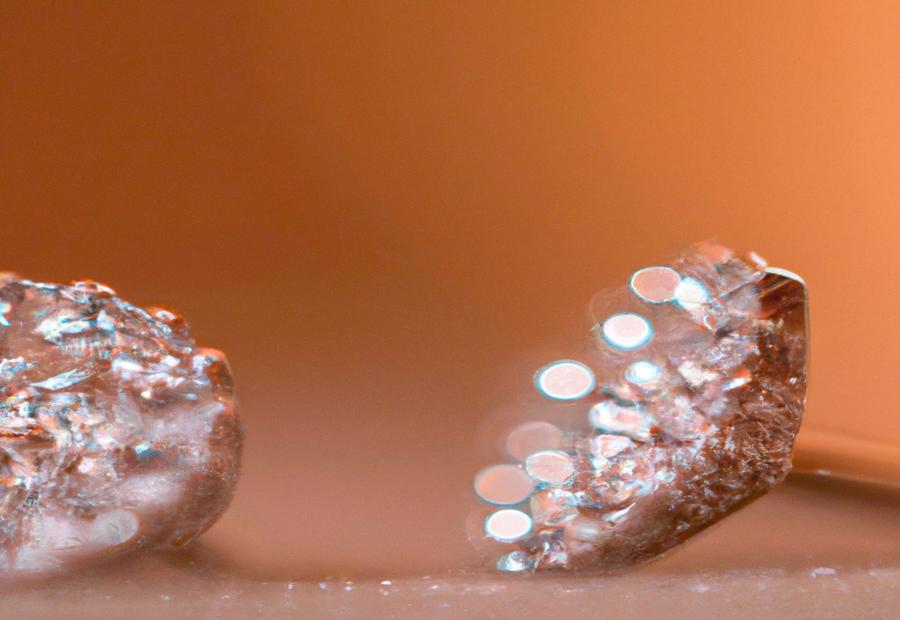
Photo Credits: Www.Lab-Grown-Diamond-Earrings.Com by William Nguyen
When evaluating the quality of lab-grown diamond earrings, certain additional grading criteria come into play. This includes factors such as chemical composition, growth rate, origin, and growth method. These criteria help differentiate between mined and lab-grown diamonds and also account for variations within the lab-grown diamond category. By understanding these aspects, consumers can make informed decisions when choosing lab-grown diamond earrings.
Chemical composition and growth rate: Factors considered in assessing the quality of lab-grown diamonds
Gemologists analyze the chemical composition and growth rate of lab-grown diamonds to determine their quality. These elements refer to the elements present in the diamond, which can affect its color and clarity. They also analyze the growth patterns to guarantee a consistent structure.
Plus, gemologists consider the size and arrangement of atoms inside the diamond’s crystal lattice, as this can impact optical properties. Additionally, any treatments done post-growth, such as annealing or irradiation, can change the color or clarity of the diamond.
By taking all these details into account, gemological labs can provide a comprehensive assessment of lab-grown diamond earrings. This ensures consumers can make wise decisions when purchasing these pieces of jewelry.
Origin and growth method: Differentiation between mined and lab-grown diamonds and variations within lab-grown diamonds
The origin and growth of diamonds can be seen as the vital difference between mined and lab-grown diamonds. Lab-created diamonds have various characteristics due to the control of their chemical composition and growth rate.
Two methods are used to grow diamonds in a lab: Chemical Vapor Deposition (CVD) and High Pressure High Temperature (HPHT). CVD involves carbon-rich gases to create diamonds with precise specs. HPHT exposes diamond seed plates to pressure and heat, similar to natural diamond formation.
Lab-grown diamonds can differ based on growth time, temperature, and pressure. This means mined and lab-grown diamonds are distinct, and lab-grown diamonds can have variations.
Science has enabled CVD to make lab-grown diamond earrings of high quality!
CVD method: Description and its impact on diamond quality
The CVD method is a popular way to make lab-grown diamonds. Carbon-rich gases are introduced into a low-pressure chamber, sparking a chemical reaction. Carbon atoms settle onto a seed, growing into a larger diamond crystal. This method is known for diamonds of high quality and purity.
The CVD method has a big impact on diamond quality. The lab-grown diamonds are similar to natural diamonds in chemical and physical properties. They have minimal impurities, making them high-grade in color and clarity. Plus, the growth environment lets you control size and shape. The result? Well-cut diamonds with great brilliance.
Sustainability and ethics are two more advantages of the CVD method. It doesn’t contribute to environmental destruction or human rights issues. Consumers looking for sustainable and socially responsible diamonds should consider it.
HPHT: turning up the heat to make bling without Mother Nature’s sting.
HPHT method: Description and its impact on diamond quality
The HPHT (High Pressure High Temperature) method is a technique used to create lab-grown diamonds with high quality and clarity. It replicates the natural formation of diamonds deep within the Earth’s mantle by exposing a diamond seed to extreme pressure and temperature conditions. The result is diamonds that are physically and chemically identical to mined diamonds, with excellent hardness and durability.
The process involves placing a diamond seed into a chamber where it is exposed to intense heat and pressure. This causes the carbon atoms to rearrange themselves and form new bonds, creating larger synthetic diamonds with a crystal lattice structure that is visually indistinguishable from mined diamonds.
A unique aspect of the HPHT method is its ability to alter the color of lab-grown diamonds. Certain elements or impurities can be introduced during the growth process to create diamonds in different colors, including fancy colors such as pink, blue, or yellow. This gives consumers more options when it comes to choosing their desired color for diamond jewelry.
Certification of Lab-Grown Diamond Earrings
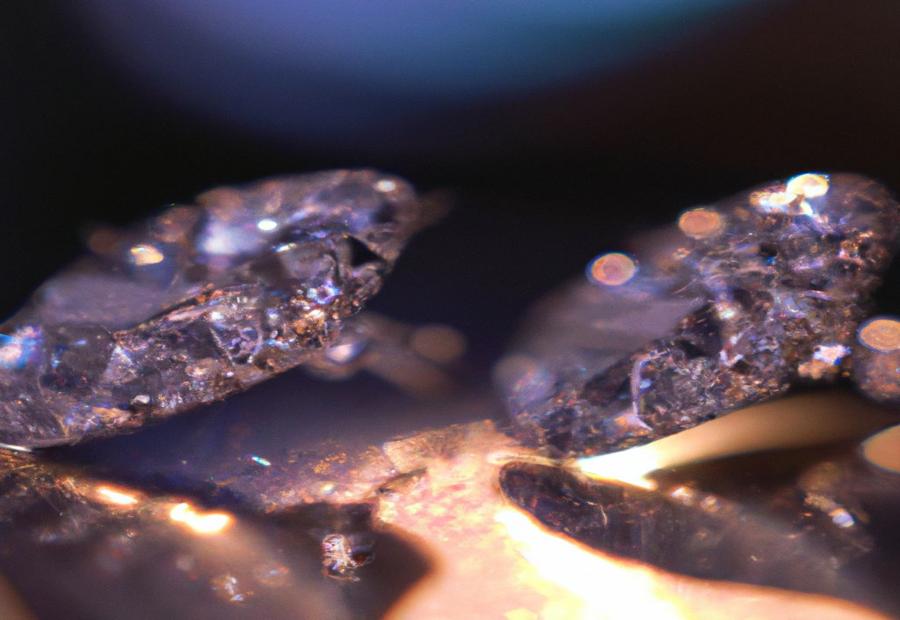
Photo Credits: Www.Lab-Grown-Diamond-Earrings.Com by Anthony Campbell
When it comes to lab-grown diamond earrings, certification plays a crucial role. In this section, we will explore the significance of diamond certificates for lab-grown diamond earrings. Additionally, we will provide an overview of reputable gemological laboratories that ensure the certification process is reliable and accurate. Put simply, understanding the certification of lab-grown diamond earrings is essential for making informed and confident purchasing decisions.
Importance of diamond certificates for lab-grown diamond earrings
Diamond certifications are essential for guaranteeing the genuineness and quality of lab-created diamond earrings. They offer evidence and assurance regarding the diamonds’ characteristics, value, and appeal. The 4Cs – cut, color, clarity, and carat weight – are evaluated and graded to judge how good the lab-created diamond earrings are.
Cut affects a diamond’s sparkle, and color is judged with industry-standard scales, like the GIA Color Grading Scale. Clarity assessment identifies any inner or outer flaws that may influence the diamond’s look. In addition, the carat weight decides the size and cost of the diamond.
Apart from the 4Cs, other elements, such as chemical composition and growth rate, are taken into account when grading lab-created diamond earrings. Different growth methods, like CVD and HPHT, can bring about differences in lab-grown diamonds, which must be considered during the grading.
To make sure the authenticity and quality of lab-created diamond earrings, it is essential to get the right certification from trustworthy gemological laboratories like GIA or IGI. These certificates give significant information about the diamonds’ features and have been examined by experts in the field. By getting certified lab-created diamond earrings, buyers can make wise decisions and feel secure about their purchase.
Overview of reputable gemological laboratories for certification
Gemological labs have an important role in certifying lab-grown diamond earrings. They are seen as reliable and dependable authorities in the industry. Labs have set strict standards and processes to guarantee exactness and genuineness of the diamond certifications.
- GIA (Gemological Institute of America) is a well-known and respected gemological lab. Their certifying system includes an exhaustive examination of 4Cs (cut, color, clarity, and carat weight) plus particular grading criteria for lab-grown diamonds.
- IGI (International Gemological Institute) is another famous gemological lab that certifies lab-grown diamond earrings. They stick to severe grading processes to assess the quality and features of the diamonds, giving detailed info on the certificates.
These trustworthy gemological labs employ highly trained gemologists who use cutting-edge equipment and techniques to analyze and grade lab-grown diamond earrings. By obtaining certifications from these reliable authorities, shoppers can trust in the value and quality of their acquisitions.
Moreover, these laboratories make sure their grading standards remain consistent across different locations around the world. So, no matter where buyers purchase their lab-grown diamond earrings, they can count on the precision and dependability of certifications provided by these reliable labs.
GIA : Explanation of their certification process and reliability
GIA is a reliable gemological laboratory. They follow a strict certification process to make sure lab-grown diamond earrings are accurate and authentic. Experienced gemologists assess the 4Cs – cut, color, clarity, and carat weight. GIA examines the precision of the cutting techniques and grades them.
Color grading is another important step. GIA uses the Color Grading Scale to rate diamonds based on their color saturation. Gemologists look closely for any unwanted hues.
Clarity assessment looks for any internal or external flaws in the diamond. Gemologists use magnification to detect any blemishes or inclusions. Carat weight is also taken into account.
GIA considers more factors too. These include the chemical composition, growth rate, and origin and growth method. This helps distinguish between mined and lab-grown diamonds, as well as different lab-grown diamonds grown by methods like CVD and HPHT.
IGI certification makes sure your lab-grown diamond earrings are real. So you can sparkle like a certified star.
IGI : Explanation of their certification process and reliability
The International Gemological Institute (IGI) is acclaimed for its dependable certification process. For lab-grown diamond earrings, IGI evaluates them based on the 4Cs – cut, color, clarity and carat weight. They also look at the diamond’s chemical composition and growth rate.
IGI has stringent procedures and standards to guarantee precise grading and certification. This is why their certifications are accepted in the jewelry world, offering customers confidence in the diamond’s authenticity and quality.
What sets IGI apart is their specific details on each diamond’s origin and growth. This helps buyers distinguish between mined and lab-grown diamonds, plus any variations within lab-grown diamonds. IGI points out two common ways of growing lab-grown diamonds: Chemical Vapor Deposition (CVD) and High Pressure High Temperature (HPHT). They take these into account during their assessment.
In conclusion, IGI’s certification process for lab-grown diamond earrings is trustworthy. This gives buyers important info about the diamond’s features and legitimacy. Consumers can dependably purchase lab-grown diamond earrings from verified retailers with IGI certifications.
Buying Lab-Grown Diamond Earrings
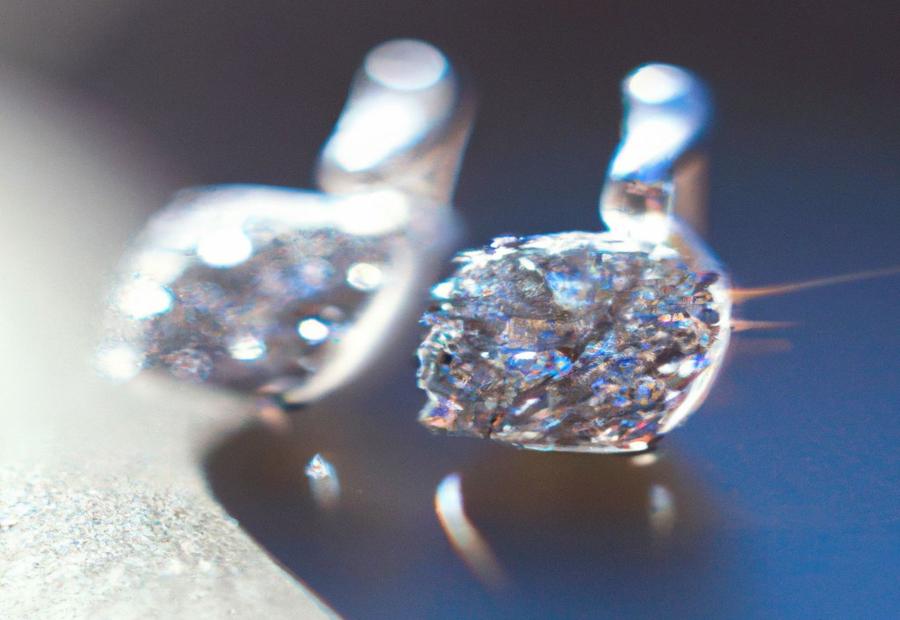
Photo Credits: Www.Lab-Grown-Diamond-Earrings.Com by Kyle Thompson
When buying lab-grown diamond earrings, it is crucial to choose trusted retailers to ensure authenticity and quality. In this section, we will discuss the importance of purchasing from reliable sources and provide recommended steps for buyers to make informed decisions. By following these guidelines, you can confidently navigate the market and choose lab-grown diamond earrings that meet your expectations.
Importance of purchasing from trusted retailers
Lab-grown diamond earrings are becoming popular, so it’s important to buy from trusted retailers. These retailers provide high-quality diamonds that have been through grading and certifying. This way, customers can be sure of the authenticity and quality of their earrings.
When buying lab-grown diamond earrings, the retailer’s credibility matters. They source diamonds from dependable suppliers who follow ethical standards and industry best practices. Plus, they make sure customers have all the info they need to make a good decision.
Trusted retailers guarantee that the diamonds have been graded by renowned gemological labs such as GIA or IGI. The certifications guarantee the diamonds are of a certain cut, color, clarity, and carat weight.
Reputable retailers also give consultations and after-sales support. They prioritize customer satisfaction and work to build long-term relationships. So, it’s essential to buy from trusted retailers who focus on authenticity, quality, and customer service.
When you buy from trusted retailers, you know you’re getting genuine, high-quality products. You also get expert guidance and special offers that may only be available through these reliable sources. Don’t miss out – choose a trusted retailer for your lab-grown diamond earrings!
Recommended steps for buyers to ensure authenticity and quality
Investing in lab-grown diamond earrings can be big. It’s essential buyers ensure the earrings are genuine and of good quality. To do this, they should take certain steps.
- Request diamond certificates from renowned gem labs. The certificates will provide info on the 4Cs of the diamonds: cut, color, clarity, and carat weight. Notable labs like GIA and IGI can certify lab-grown diamonds accurately.
- Seek customer reviews and recommendations. Learn about a retailer’s repute and customer service by reading reviews or asking trusted sources. This lets you know what to expect.
- Buy from trustworthy retailers. They’re likely to only sell authentic, certified lab-grown diamond earrings. Plus, they prioritize customer satisfaction with quality products.
A story: A couple wanted to buy lab-grown diamond earrings for their anniversary. They were tempted to shop at a less-known online store without reviews or certifications. But, after doing research, they found out the store had unethical practices. They chose a recommended jewelry store instead. It had good customer reviews and GIA-certified lab-grown diamond earrings. They got a beautiful pair of earrings with genuine certifications!
Make sure your lab-grown diamond earrings come with certificates from credible labs for guaranteed authenticity and sparkle!
Requesting diamond certificates from reputable laboratories
The importance of diamond certificates when buying lab-grown diamond earrings is undisputed. These certificates serve as official documentation of the diamond’s characteristics, such as its 4Cs (i.e. Cut, Color, Clarity, Carat Weight).
It is vital to request certificates from reputable gemological laboratories like GIA (Gemological Institute of America) or IGI (International Gemological Institute). These organizations are well-known for their expertise in accurately and impartially grading diamonds.
Diamond certificates provide detailed information about the lab-grown diamond earrings, including their unique identification numbers, measurements, weight, color grade, clarity grade, cut grade, and other pertinent details.
Requesting diamond certificates allows buyers to verify the authenticity and quality of lab-grown diamond earrings independently. They can compare the certificate’s information with the actual characteristics of the diamonds to make sure it is accurate.
Moreover, requesting certificates from reliable labs can protect buyers from purchasing counterfeit or misrepresented lab-grown diamond earrings. The certificate works as tangible proof of the diamond’s quality and value. Plus, it can be used for appraisals or reselling purposes, as documented evidence of the diamonds’ characteristics.
So, before investing in lab-grown diamond earrings, make sure to get diamond certificates from reputable laboratories. This will ensure that you are getting authentic diamonds of the highest quality and value, and protect yourself from potential fraud or misrepresentation. Also, don’t forget to check reviews of retailers before making purchases!
Seeking recommendations and reviews of retailers
To get advice on where to buy lab-grown diamond earrings, ask friends, family, and colleagues who have bought them before. They can tell you about their experiences and suggest good retailers. Read reviews online too. Look for lots of positive comments about the diamond quality, customer service, and shopping experience.
A reputable retailer is one with partnerships with gemological labs such as GIA or IGI. Their certifications guarantee the authenticity and quality of the earrings.
By researching before buying, you can be sure your investment in lab-grown diamond earrings is worth it. Pick a reliable retailer who cares about customers and offers genuine certification for their diamonds. This way you can make an informed decision and have a satisfying buying experience.
Conclusion
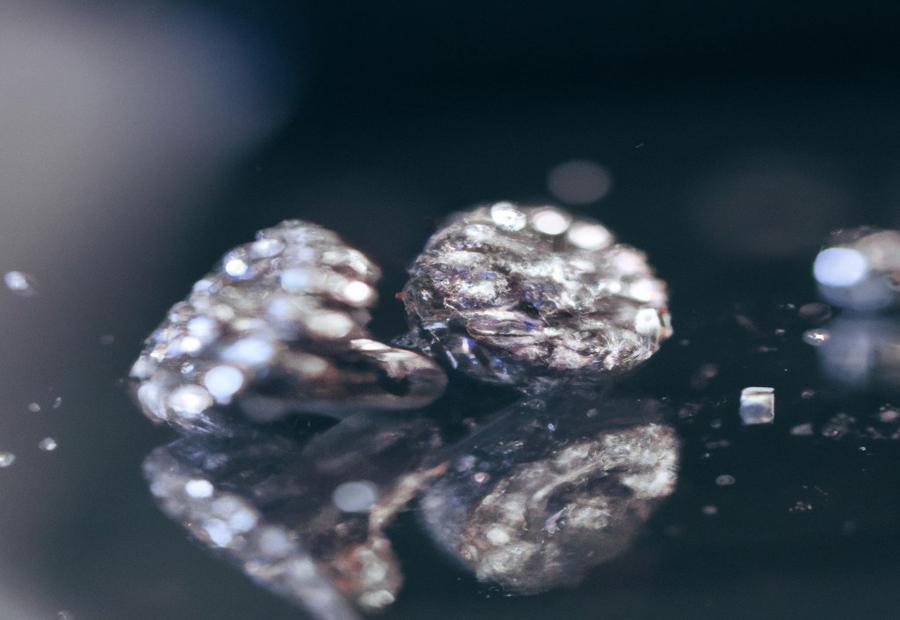
Photo Credits: Www.Lab-Grown-Diamond-Earrings.Com by Jonathan Jones
In conclusion, this section aims to provide a recap of the grading and certification process for lab-grown diamond earrings. Additionally, it offers valuable advice for buyers to make informed decisions and accurately value lab-grown diamond earrings. With a focus on ensuring customer satisfaction and transparency in the industry, this section presents key information to empower buyers in their purchasing journey.
Recap of the grading and certification process for lab-grown diamond earrings
The certification and grading of lab-grown diamond earrings is meticulous. It assesses various factors to determine their quality. This lets consumers make informed decisions and trust their purchases.
Lab-grown diamonds are judged on the 4Cs: cut, color, clarity and carat weight. Each factor is examined for the diamond’s grade. Cut is important, as it enhances brilliance. Color is measured on the GIA Color Grading Scale. Clarity looks at any flaws. And carat weight assesses value based on size.
In addition, there are other unique criteria for lab-grown diamonds. These include chemical composition and growth rate. It’s also necessary to understand the difference between mined and lab-grown diamonds. Lab-grown diamonds are made with CVD (chemical vapor deposition) and HPHT (high-pressure high-temperature).
Certification from gemological laboratories is essential. The most reputable is GIA (Gemological Institute of America). IGI (International Gemological Institute) is another trusted option. These certificates provide details about the diamond’s features and qualities.
Buyers should purchase lab-grown diamond earrings from reliable retailers. Requesting certificates from GIA or IGI is important. Seeking recommendations and reading reviews can also help buyers.
Advice for buyers in making informed decisions and valuing lab-grown diamond earrings.
Lab-grown diamond earrings are becoming trendier in the jewelry industry. To make wise decisions and value them right, buyers must take special tips into account.
Firstly, buyers should opt for trusted sellers. This guarantees that the lab-grown diamond earrings are of high quality and genuine. These retailers usually have connections with dependable suppliers, which gives assurance to buyers.
Secondly, buyers should ask diamond certificates from reliable gemological laboratories for the earrings they plan to buy. These certificates offer information about the grading and certification process, making sure everything is transparent and real.
Thirdly, getting referrals and reviews of retailers is imperative when making a choice. Online networks and forums can give useful thoughts from other shoppers who have previously bought lab-grown diamond earrings. This can help buyers evaluate the reputation and dependability of different retailers.
In addition to these points, it’s essential for buyers to remember that lab-grown diamond earrings can differ in quality based on factors such as chemical composition and growth rate. So, taking these unique details into consideration when assessing potential purchases is vital.
By following this advice, buyers can make informed decisions and precisely value lab-grown diamond earrings, making sure they are pleased with their investment.
Some Facts About How Lab-Grown Diamond Earrings Are Graded:
- ✅ Lab-grown diamonds earrings are graded using the 4Cs: cut, color, clarity, and carat weight, just like mined diamond earrings. (Source: Team Research)
- ✅ Trained gemologists evaluate the characteristics of lab-grown diamond earrings using specialized tools. (Source: Team Research)
- ✅ Organizations such as GIA, IGI, and AGSL grade lab-grown diamond earrings based on the same criteria as mined diamond earrings. (Source: Team Research)
- ✅ Lab-grown diamond earrings are also graded based on additional criteria such as chemical composition, growth rate, origin, and growth method. (Source: Team Research)
- ✅ Certificates issued by reputable gemological laboratories like GIA or IGI provide detailed information about the quality and characteristics of lab-grown diamond earrings. (Source: Team Research)
FAQs about How Are Lab Grown Diamond Earrings Graded?
How are lab grown diamond earrings graded?
Lab grown diamond earrings are graded using the same criteria as mined diamonds, known as the 4Cs: cut, color, clarity, and carat weight. Trained gemologists evaluate the diamond’s characteristics using specialized tools. Organizations such as GIA, IGI, and AGSL grade lab grown diamonds based on these criteria.
What additional criteria are used to grade lab grown diamond earrings?
In addition to the 4Cs, lab grown diamond earrings are graded based on their chemical composition and growth rate. They are also graded based on their origin (mined vs. lab-grown) and growth method (CVD or HPHT). Certificates issued by independent gemological laboratories provide detailed information about a lab-grown diamond’s characteristics.
Do lab grown diamond earrings meet the same quality grade as mined diamonds?
Yes, lab grown diamond earrings can meet the same quality grade as mined diamonds. The grading process ensures that lab grown diamonds are accurately assessed and can be compared to mined diamonds. With proper grading, lab grown diamonds can have high quality and value.
Are lab grown diamond earrings ethically sourced?
Lab grown diamond earrings are considered ethically sourced as they are created in controlled environments. Unlike mined diamonds, lab grown diamonds are not associated with unethical mining practices or human rights issues. They provide a sustainable and responsible alternative to mined diamonds.
What is a Diamond Grading Report and why is it important for lab grown diamond earrings?
A Diamond Grading Report is a document issued by a gemological laboratory that provides an assessment of a diamond’s quality and characteristics. It contains information about the diamond’s cut, clarity, color grade, carat weight, and measurements. For lab grown diamond earrings, a Diamond Grading Report ensures transparency, authenticity, and helps buyers make informed decisions.
Which organizations are reputable for grading lab grown diamond earrings?
Reputable organizations for grading lab grown diamond earrings include GIA (Gemological Institute of America), IGI (International Gemological Institute), and AGSL (American Gem Society Laboratories). These organizations have a long history of diamond grading, use standardized systems, and provide reliable certifications.

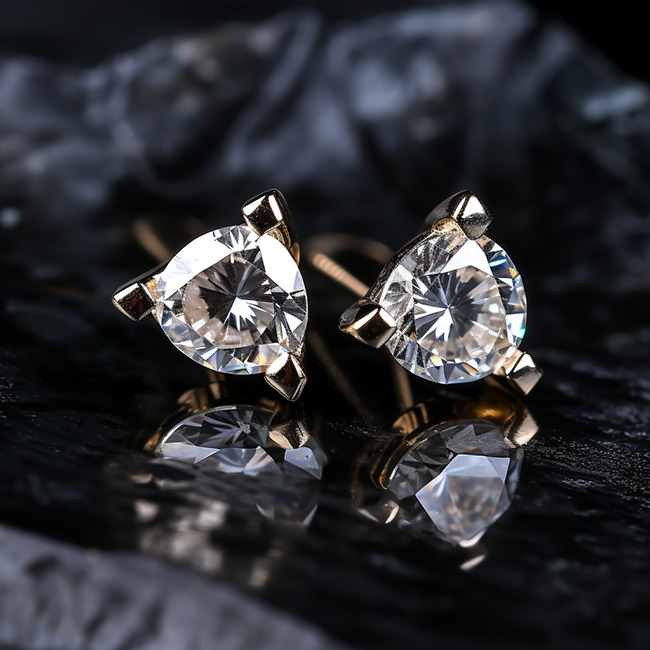
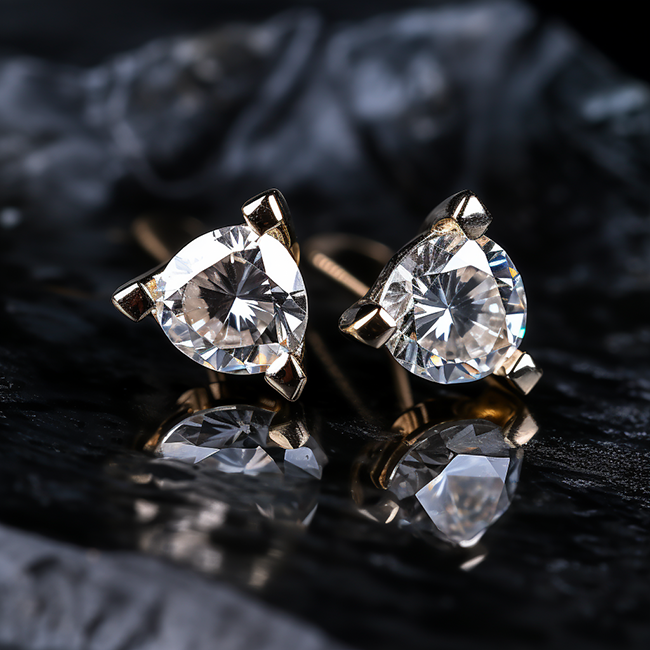
Leave a Reply